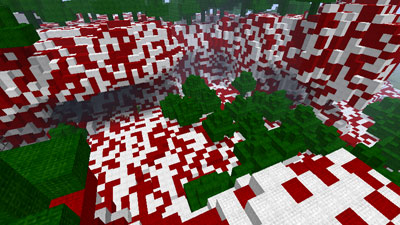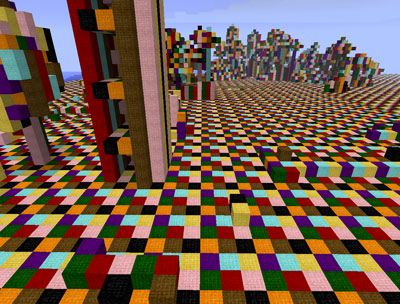Block Data Syntax
All commands that take a block to use support this syntax.
Data value
Some blocks use the data values, and data values are valid between 0 and 15 (inclusive) (although not all blocks support the entire range). To specify a block’s data, simply append a colon (:) and the value after the block name or ID, as follows.
Example: Setting an area with grown crops
//set crops:7Information about blocks that use their data value can be found on the Block Data Values Page.
For wool Since v2.15, carpet and stained clay Since v5.5.9 you can also use its color name (i.e. //set wool:red).
Sign text
Sign text is separated by pipe symbols (|) for each line. Spaces must be replaced with underscores (_).
Example: Setting sign text
//set sign|Line1|Line2_Text|Line3Example: Setting sign data (orientation) and text
//set sign:4|Line1|Line2_Text|Line3Mob spawner mob type
The mob spawner mob type can be specified after a pipe symbol (|).
Example: Setting mob type
//set mobspawner|SquidNote block pitch
The pitch of a note block can be specified after a pipe symbol (|). The pitch is a number between 0 and 24, inclusive.
Example: Setting note block pitch
//set note|24Skull Type
The type of skull and rotation of the skull can be specified after a pipe symbol (|). The type can be either “skeleton”, “wither”, “zombie”, “creeper”, or the name of a player. The rotation is a number between 0 and 15, inclusive.
Example: Setting a creeper skull facing west
//set skull:1|creeper|12Example: Making a Notch head
//set skull|NotchPatterns
A number of commands that take a “block” parameter really take a pattern. Rather than set one single block, a pattern allows you to set more complex patterns. For example, you can set a pattern where each block has a 10% chance of being brick and a 90% chance of being smooth stone.
Note all commands that take a block parameter support patterns yet (as of writing), but it is planned for all commands to be converted over.
Block probability
The block probability pattern is specified with a list of block types (which also support the block data syntax mentioned above) with their respective probability.
Example: Setting all blocks to a random pattern using a list with percentages
//set 5%diamondore,95%dirtFor a truly random pattern, no probability percentage is needed.
Example: Setting all blocks to a random pattern using a list without percentages
//set obsidian,stone
Clipboard
Since v3.0 You can make a copy with the clipboard and use #clipboard or #copy for the pattern to repeat the copy.
Example: Setting all blocks to the clipboard copy
//set #clipboard